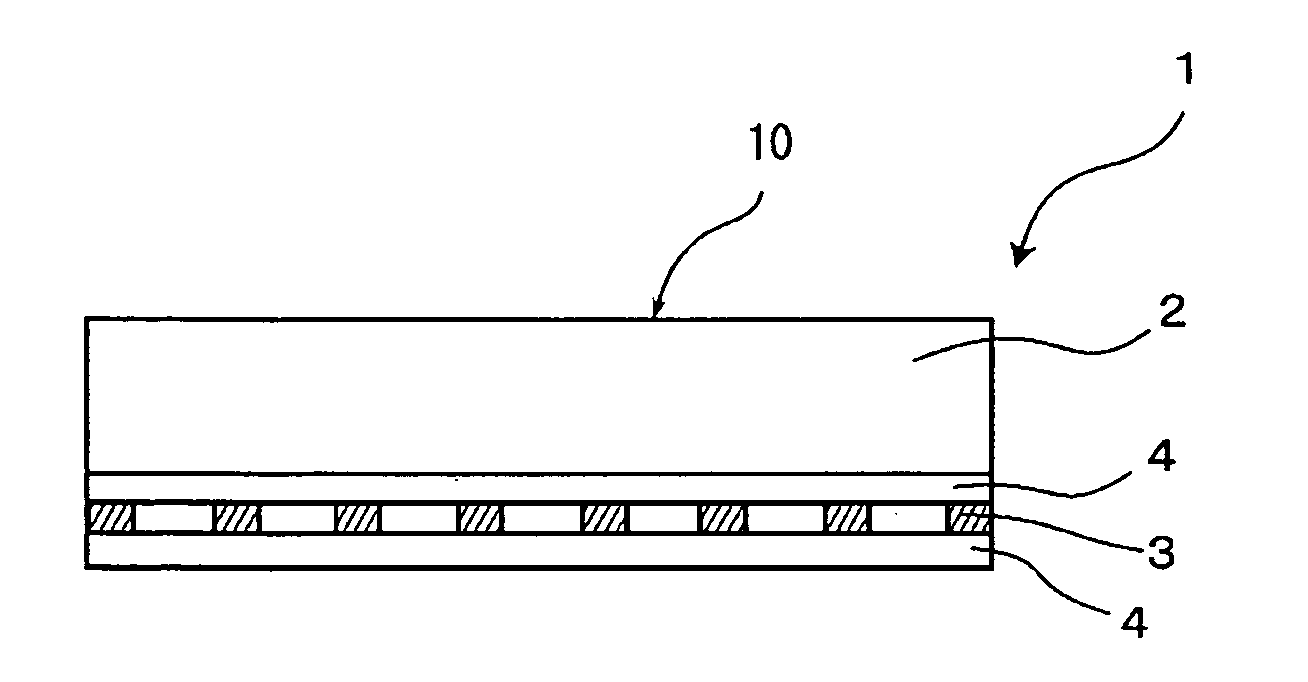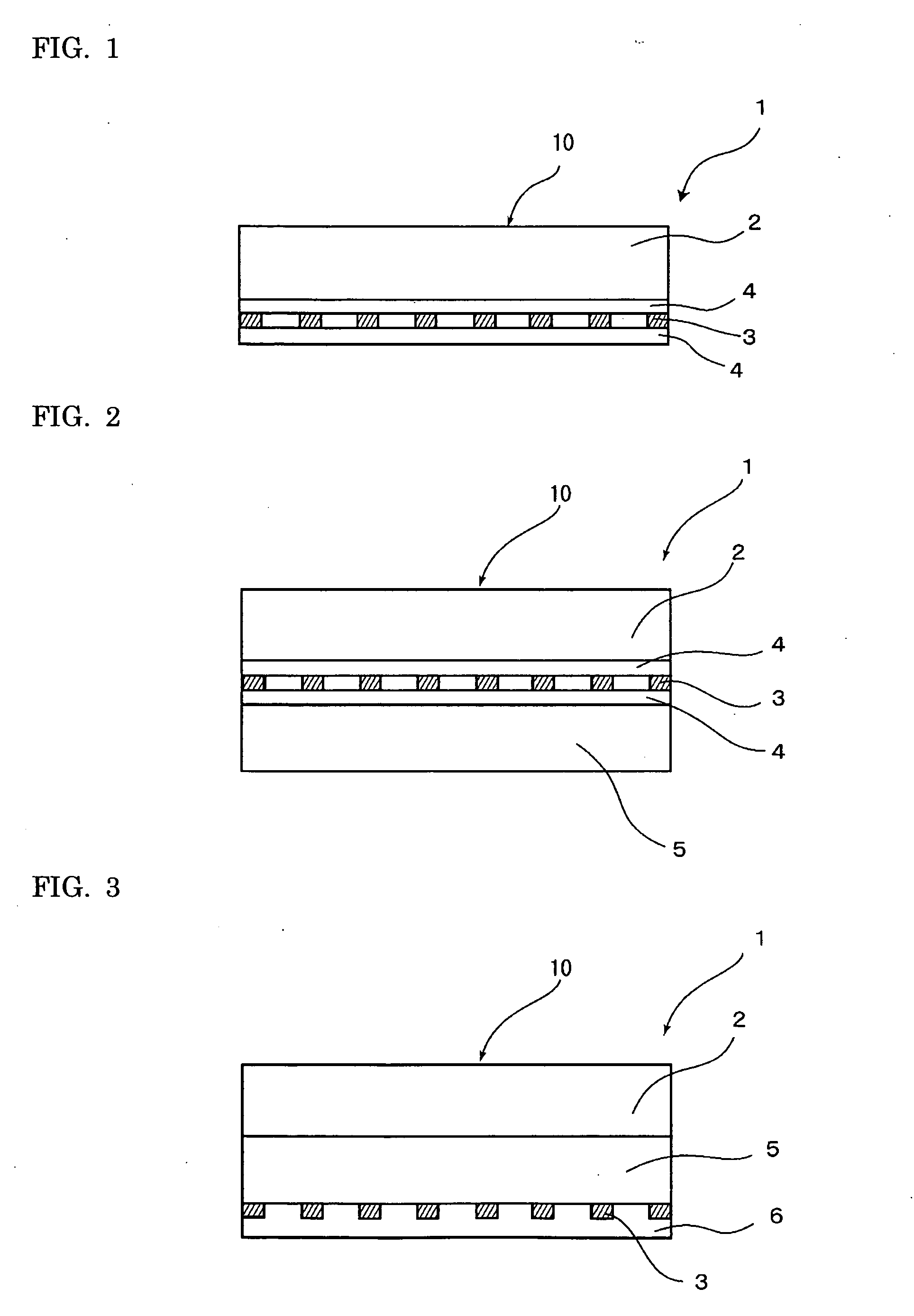Semiconductor fabrication device heater and heating device equipped with the same
a technology of semiconductor fabrication and heating device, which is applied in the direction of ohmic-resistance heating, ohmic-resistance heating details, electrical apparatus, etc., can solve the problems of difficult to effectively form fine circuit patterns using photolithography, and achieve the effect of reducing the influence of environmental variations, quick cooling, and reducing the temperatur
- Summary
- Abstract
- Description
- Claims
- Application Information
AI Technical Summary
Benefits of technology
Problems solved by technology
Method used
Image
Examples
first embodiment
[0124] As shown in FIG. 1, a stainless steel resistance heating body 3 having a thickness of 50 microns and a diameter of 330 mm and in which a heater circuit is formed from a single zone is interposed between two polyimide plates (thickness 150 microns) serving as insulators 4. A copper plate 2 having a thickness of 15 mm and a diameter of 330 mm is attached, resulting in a heating body 1. The copper plate is nickel-plated.
[0125] This heating body was placed in a stainless steel container. The heating body was heated to 130 deg C. and a room-temperature (25 deg C.) wafer thermometer having a diameter of 300 mm was mounted on a heating surface 10. The temperature on the wafer thermometer was measured at 30 seconds after mounting, 60 seconds after mounting, and 5 minutes. The differences between the maximum measured temperature and the minimum measured temperature are shown in Table 1. The table also shows the heat capacity and the thermal conductivity of the copper plate used as th...
second embodiment
[0126] As shown in FIG. 2, a stainless steel resistance heating body 3 having a thickness of 50 microns and a diameter of 330 mm was interposed between two polyimide plates 4 as in the first embodiment, and this was then placed between a base 5 and a base 2 having a diameter of 330 mm, resulting in a heating body 1. The thickness of the base 2 was 4.5 mm and the thickness of the base 5 was 10.5 mm. The materials used for the base 2 and the base 5 are as shown in Table 2. The copper plates were nickel-plated. These heating bodies were attached in a stainless steel container and, as in the first embodiment, a wafer thermometer was mounted on the heating surface and temperature ranges were measured after 30 seconds, 60 seconds, and 5 minutes. The results, along with the heat capacity and the thermal conductivity of the bases are shown in Table 2.
TABLE 2TemperatureHeatThermalranges (° C.)capacityconductivity60Base 2Base 5(J / Kcm3)(W / mK)30 secsec5 minNiNi3.9940.150.090.08FeFe3.4840.170....
third embodiment
[0127] A heating body was prepared and temperature ranges were measured with a wafer thermometer as in the second embodiment except that, as shown in Table 3, metal and ceramic composite bodies were used as the material for the base 2 and the base 5. The results are shown in Table 3. In the table, Si-70SiC, for example, indicates a composite material of Si and SiC with an SiC content of 70 percent by weight.
TABLE 3ThermalHeat capacityconductivityTemperature ranges (° C.)Base 2Base 5(J / Kcm3)(W / mK)30 sec60 sec5 minSi—70SiCSi—70SiC3.01720.130.100.07Al—30SiCAl—30SiC2.31500.170.130.10Al—AlNAl—AlN2.81760.130.100.07
PUM
| Property | Measurement | Unit |
|---|---|---|
| distance | aaaaa | aaaaa |
| flatness | aaaaa | aaaaa |
| temperature | aaaaa | aaaaa |
Abstract
Description
Claims
Application Information
 Login to View More
Login to View More - R&D
- Intellectual Property
- Life Sciences
- Materials
- Tech Scout
- Unparalleled Data Quality
- Higher Quality Content
- 60% Fewer Hallucinations
Browse by: Latest US Patents, China's latest patents, Technical Efficacy Thesaurus, Application Domain, Technology Topic, Popular Technical Reports.
© 2025 PatSnap. All rights reserved.Legal|Privacy policy|Modern Slavery Act Transparency Statement|Sitemap|About US| Contact US: help@patsnap.com


